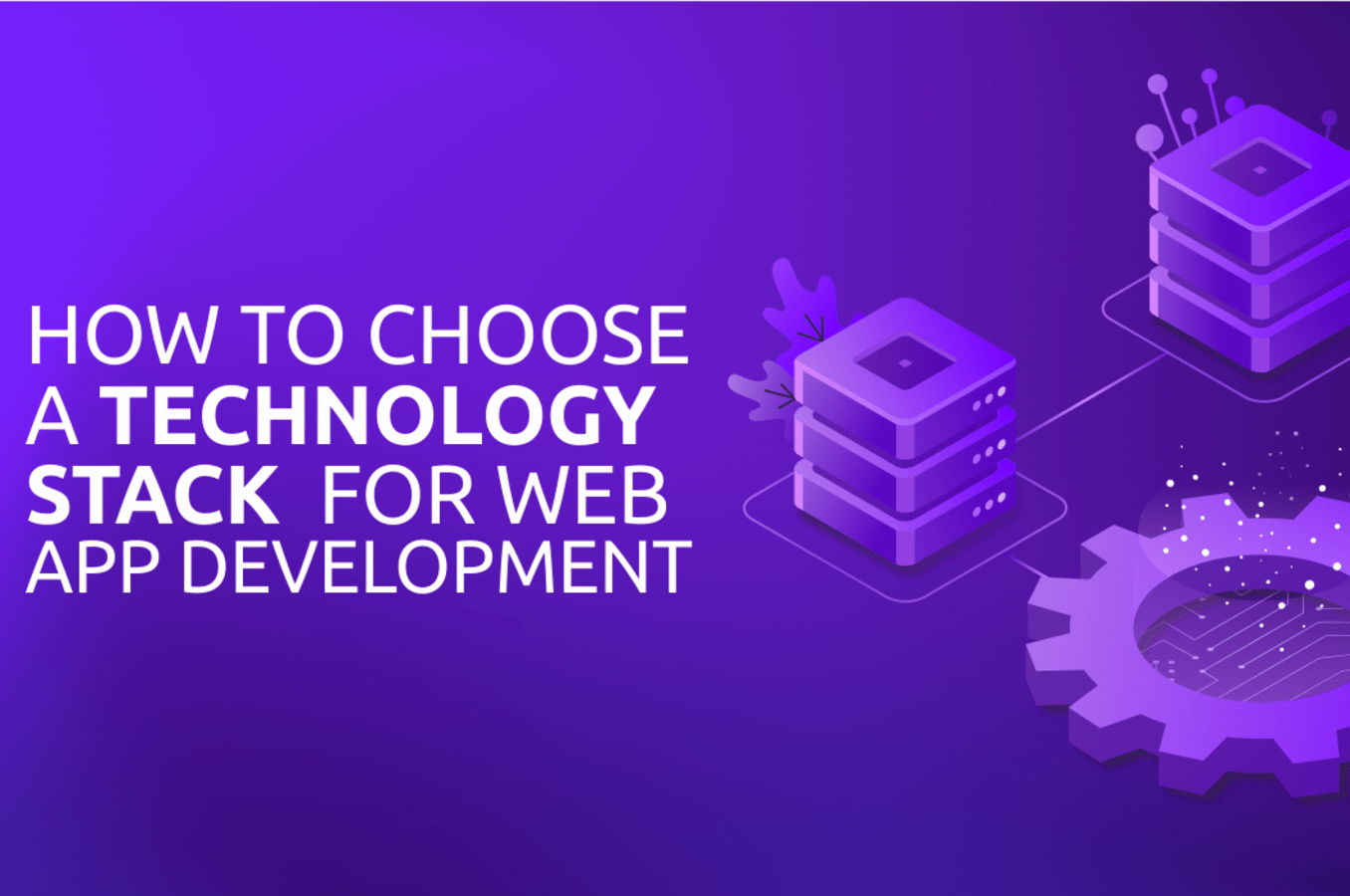If nothing makes a better morning than a coffee, then a technology stack jump-starts the future of a web application development. And just like with coffee, well-selected grains of a tech stack can either breathe life into a web application or hinder its development and later maintenance.
When determining your technology stack for web development, a number of criteria have to be taken into account – each component within, and all of them combined, directly translates into the quality, performance, and usability of a web app.
The choice of the technology stack also depends on the type of business:
- Startups usually have limited budgets but heavily depend on the initial success of a Web app so they need reliable and battle-tested tech stacks.
- Large companies seeking to build robust and highly available web applications need to invest in technologies that are powerful enough to efficiently handle high traffic volumes.
As you can see, there is a lot to consider when choosing a technology stack for your web application development, so before explaining how to go about it, we first have to talk a bit about what’s what in the world of web app development.
Buckle up, then, and let’s go for a ride.
What Is a Good Web Application?
The answer might seem obvious, but it’s important to understand some of the technicalities involved in the making of an app before moving on with our exploration.
A Web app is installed on a server and accessed over the Internet via a Web browser on a user’s device. To access the app, the user doesn’t have to download it to the device.
Each app’s infrastructure should include:
- A database – to store app data.
- A caching system—to decrease database load, helping the database process surges in traffic.
- A web server—to handle requests sent from the browser and return information.
Database
The function of a database is to search, filter, present, and sort the information in a web application based on user requests sent via a web browser. To further support user queries, a database can perform various calculations. Databases are the backbone of many online services, e.g., e-commerce websites or discussion boards.
Databases are divided into:
- Relational: PostgreSQL, MySQL
- Non-relational: MongoDB, Apache Cassandra
Caching System
Caching system reduces server lag and relieves the database of heavy loads during peaks in traffic by serving previously used and accessed data. Without the caching system, web apps are often sluggish and offer poor site performance.
The most popular caching systems are Varnish, Redis and Memcached.
Web Server
A web server receives, processes, and delivers user (i.e. a web browser) requests in the form of an HTML message.
Most used web servers:
- NGINX (open source)
- Apache HTTP Server (open source)
- IIS (free and paid options)
The Frontend
The frontend, aka the client-side, encompasses everything a user can see. The frontend makes the interaction with a Web application possible through the tangible presentation layer.
Components of the Frontend
- HTML (Hypertext Markup Language): responsible for the structure of the displayed content.
- CSS (Cascading Style Sheets): describes the style (presentation) of the content (layout, colors, fonts, spacing), can be short-handed with tools such as SASS.
- JavaScript: breathes interactivity into a Web application: animations, forms, image carousels, visuals, etc.
- AJAX (Asynchronous JavaScript and XML): used for updating only snippets in a web application without reloading the whole page.
The HTML and CSS part of the frontend can be built with frameworks, which contain standardized code packages that speed up development and add functional components.
Popular frameworks for HTML and CSS are Bootstrap, Foundation, Stylus (for Node.js applications—more on that later), Semantic UI, and UI Kit.
The JavaScript part of the frontend, just like HTML and CSS, is usually developed with frontend frameworks or libraries, such as Vue, Angular, or React. JavaScript frameworks and libraries help Web developers add even more interactivity to apps and boost user experience.
The use of JS frameworks greatly speeds up the development process, while lightweight frameworks, such as Vue, are highly flexible and retain their high performance no matter the backend.
The Backend
The backend, AKA the server-side, governs the logic behind how a website works. Essentially, the backend is the technology responsible for the communication between the client-side, the server-side, and all the components within the backend.
Components of the Backend
The backend usually consists of a server-side software and background processes. Yet, depending on the complexity and specificity of a Web application, the setup might be different—we’ll talk more about this in the next section.
Server-side software
Server-side software determines how the server, application, database, and other components in a Web application architecture communicate and work with each other.
A Web app code can be written raw or with the use of a backend framework, which streamlines the development process. Each programming language has a number of frameworks based on it. The most popular are:
| Programming language | Framework | ||
| PHP | Laravel | Symfony | CodeIgniter |
| Python | Django | Flask | Tornado |
| Ruby | Ruby on Rails | Hanami | Sinatra |
| JavaScript (Node.js) | Nest.js | Express.js | Meteor.js |
| Scala | Play | Lift | Akka |
| Elixir | Phoenix Framework | Sugar | Nerves |
Background processes
Very often a business logic created under the hood is heavy and needs a lot of time to process. An application may slow down and, even worse–may be blocked, because current resources are actually reserved for some operation. When the user is ready for that kind of disadvantages, for example when some big file needs to be uploaded–okay, it’s not that bad.
But what happens when somebody wants to send 1000 emails from the interface and it’s just a click of a button, but processing on the server takes minutes?
This is exactly the perfect use case for background processes. It’s a very common practice that a part of the time consuming logic is moved to external workers, which will improve the experience of the users and the application’s performance.
Combined, all of the components listed above are called a technology stack.
Web Application Infrastructure
Now that we have the basic stuff out of the way, let’s dive a little bit deeper into our Web app decomposition.
The basic type of a Web application will have a single database and a single server on the backend and, of course, the presentation layer: the frontend.
One Web Server and One Database
This basic Web application setup, however, is usually used only in small and simple projects, preferably even only test projects.
Having a Web app running only on one Web server and with one database is a considerable risk for business owners. With one server, when it goes down, the Web app becomes unavailable. Therefore, this structure is not recommended as a core setup for a company Web application.
Developing solutions with a single point of failure might be the cause of many future headaches, which, as I will promptly explain, can be easily avoided.
Two Servers and One Database
With two servers operational, there’s no single point of failure in case one of them crashes – the Web application will remain operational, with all requests redirected to a working Web server.
However, there’s still the single database to consider—if that database malfunctions, so will the Web application, regardless of two servers.
Thus, in this setup, the database should be installed on a separate machine rather than on one of the two servers. This allows for effortless horizontal scalability in the future, should the traffic increase. Also, with the database running on a separate machine, you’re increasing the safety of your data, adding another level of security for a possible attacker to go through before compromising your Web application.
With two separate Web servers, there’s also the performance aspect to consider—a two-fold increase in available resources.
Two and More Web Servers and Databases
This is pretty much a fail-proof architecture: ideal for large enterprises and companies where core business operations rely on the seamless availability of a Web application.
The database in this setup can be duplicated and installed on two separate machines or distributed across those two, or more machines. With the former structure, when one database crashes, the other takes over, maintaining availability and ensuring no information is lost. The latter structure is somewhat risky, for when one database machine with a portion of data fails, the information becomes unavailable to the users.
Equipped with load balancers, the Web servers will allocate workload and maintain high performance regardless of the traffic.
How to Choose a Technology Stack for Web Application Development
With a general understanding of what constitutes a Web application and what is the responsibility of each component in the technology stack, let’s slice up the meat of the matter.
#1. Project size and complexity
Considering how many components are involved in the development of a Web application, one of the biggest determinators as to the tech stack necessary to build it is the size and complexity of the project.
Having a clear picture of what you want to develop will help you decide on the technology stack that brings the most benefits to the table.
Small apps, MVPs
In most cases, these are landing pages, with some interactivity, or basic online stores (with a small number of offered courses, services, etc.).
While they can be built using one of the widely available (and free) CMS platforms (such as WordPress) you can use a tech stack that combines the frontend and backend for a better performance, usability, safety and a more unique touch.
Choosing custom development over off-the-shelf CMS platforms means that any possible attack vectors for hackers or bugs, that might result in poor performance or usability, will be kept to a minimum, because the code is in the hands of professional devs. Security, user experience, and performance are the elements that can’t be ignored regardless of the size of the business. Quite on the contrary: the better the first impression of a product in its nascent stages, the higher the chances of its profitable future.
New technological stacks will do perfectly here. There are two ways of creating that kind of applications. Stack based on Ruby on Rails and JavaScript, or the second one based on NodeJS and Vue.js. In the first case, the backend would be created in Ruby on Rails, which guarantees rapid development. In the second case, the whole app will be built in JavaScript, and Vue.js on the client-side will ensure timely deployment, which is especially important in building MVPs and information-based websites.
Medium apps
Web apps with many more features, such as full-fledged e-commerce stores or enterprise-grade applications.
There’s more logic and behind the scenes action going on here, which requires a combo of programming languages and different technologies for APIs. The newest technological stack based solely on JavaScript can be implemented in those projects just as well, resulting in great usability and performance.
Also, the architecture of a medium Web application will be more complex, since they have to handle large traffic efficiently while being highly available.
Large apps
With built-in analytics, many custom features, and numerous third-party integrations.
These are international marketplaces, HR software, social networks, just to name a few. A technology stack for such complex Web applications is usually a high-calorie combo of different development technologies, programming languages, and custom solutions.
Technology stacks behind large apps have to be speedy, scalable, available, and maintainable. To meet these requirements, each component of the stack has to be carefully picked by the software development team.
If a Web application is going to do lots of real-time data processing, the bulk of operational responsibility will fall on the backend. Needless to say, the server-side has to be optimized to meet the demand.
Examples of Web apps with heavy data processing:
- Audio/video streaming
- Real-time communication
- Browser games
- File sharing
#2. Budget
When determining the technology stack, and especially the backend language, the rule of thumb is that the more advanced and sophisticated the programming language, the higher the cost of the development.
Some software development companies communicate with business analysts, whose job is to help with project estimation and who try to find the best solutions within your budget. In order to develop an application suitable for your needs and the market, they may offer discovery workshops. These focus not only on the scope of the app, but also on the development process, user needs and design. So, after a couple of days, you receive a quite detailed estimation.
#3. Time to Market (TTM)
If you’re pressed for time, you might want to choose technology stacks that greatly facilitate code reuse and speed up the development process. Modern stacks not only use the same programming language across the whole ecosystem of a Web application but also have components that can be reused between the backend and frontend, with only slight modifications injected.
Ruby on Rails is also lauded as one of the fastest programming frameworks, allowing developers to build startup apps and MVPs with lightning speed.
Integrations and out-of-the-box solutions affect TTM, too. With technology stacks where many functionalities are readily available and integrations with third-party service providers and solutions are hassle-free, TTM drops considerably.
#4. Security
While complete security and invulnerability from hacker attacks are impossible these days, there are technologies and programming languages that are safer than others. If your Web application relies heavily on customer data, be sure to thoroughly analyze the security means implemented in the technology stack you’re considering.
Sophisticated authorization and authentication methods are of utmost importance. Also, the very fabric of the code has to leave no stray points of entry for attackers.
When developers are following security guidelines and best practices during development, the vulnerabilities and possible attack vectors hiding within the code can be kept to a minimum.
#5. Scalability
Scalability of a technology stack is crucial for businesses intending to grow in the future and meet the increased demand for their undisrupted availability.
That said, when picking a technology stack, check its horizontal and vertical scalability options.
Horizontal scalability is about the possibility to add next servers to the current one.
Vertical scalability is about adding more resources (CPU/RAM/DISK) to the current setup of a web server.
#6. Licenses
When deciding on a technology stack, be sure to implement solutions that are open source. They’re free of charge and are available for use with limitless modifications, as per project requirements. Picking open-source technologies ensures lower initial development costs as well as later maintenance fees.
#7. Bug testing
According to Hackerrank, untested or broken code is the biggest bug in production. To save time otherwise needed for bug fixes, it’s important to include technologies where conducting testing is easy. Test automation framework Selenium, or apps such as Katalon or Cypress.io, are essential for a speedy delivery of quality Web apps, with the number of bugs kept to a minimum.
It’s also worth considering technologies propagating test-driven development (TDD). TDD technologies are especially useful when you have a Web app prototype with the correct structure of components and interactions defined clearly. Before writing the production code, TDD lets devs write tests that ensure errorless data flows in the app to be.
#8. Dev community and documentation
When dealing with obscure technologies, it may sometimes be tricky for a developer to find a solution to a problem. Trying to figure out how to make something work or identify a piece of code that is throwing errors can both delay the deployment date or the introduction of post-deployment modifications.
Look for technologies with good documentation and considerable developer community. The two combined ensure the likelihood of finding the necessary solution quickly. A vibrant community of developers and contributors might also be able to work out how to overcome an issue if the documentation lacks the solution.
Tips on What to Avoid When Choosing a Technology Stack for a Web App Development
#1. Trends
Following technology trends is important in order to know if there are any revolutionary changes in Web app development. Yet, they should never shape the tech stack for a Web application.
New and exciting technologies might be tempting, but before deciding on implementing them, cross-check their functionality and performance with the needs of your application. Why invest money in solutions that excite but don’t necessarily add value to your business or to the users? Make a thorough research first, and decide wisely on a tech stack that will match your business needs.
#2. Competition’s tech stacks
In the next section, we’ll show you a collection of popular tech stacks behind Web apps of known international brands, but treat them only as an insight rather than a direction your project should follow. It’s good to know what successful companies in your industry have running behind the scenes, but only if the setup matches your business context.
#3. Internet research
Do your research to know what’s what when asking questions relevant to your technology stack. Nevertheless, always consult with an experienced developer on what to choose to fit the needs and specificity of your company.
Technology Stacks Behind Popular Web Apps
Below you’ll find the tech stacks behind internationally recognized Web apps that Stackshare was able to investigate into. We’re showing you only their major components. To grasp the complexity of the whole architecture of each technology stack, visit its respective link.
Google.com – Search engine for the world’s information, including webpages, images, videos and more. Full stack here.
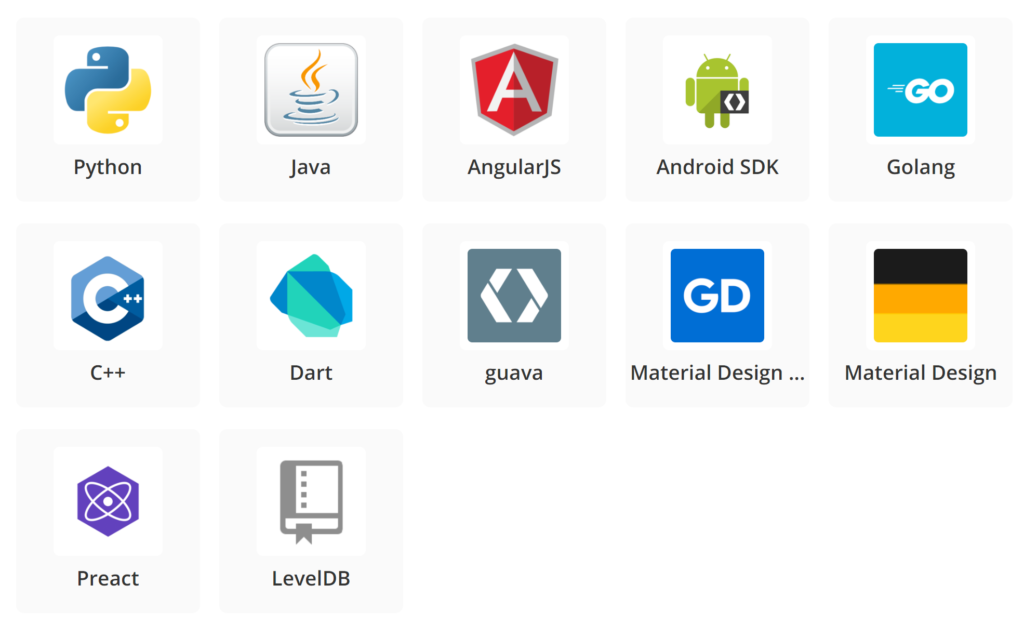
Facebook.com – a worldwide social network. Full stack here.
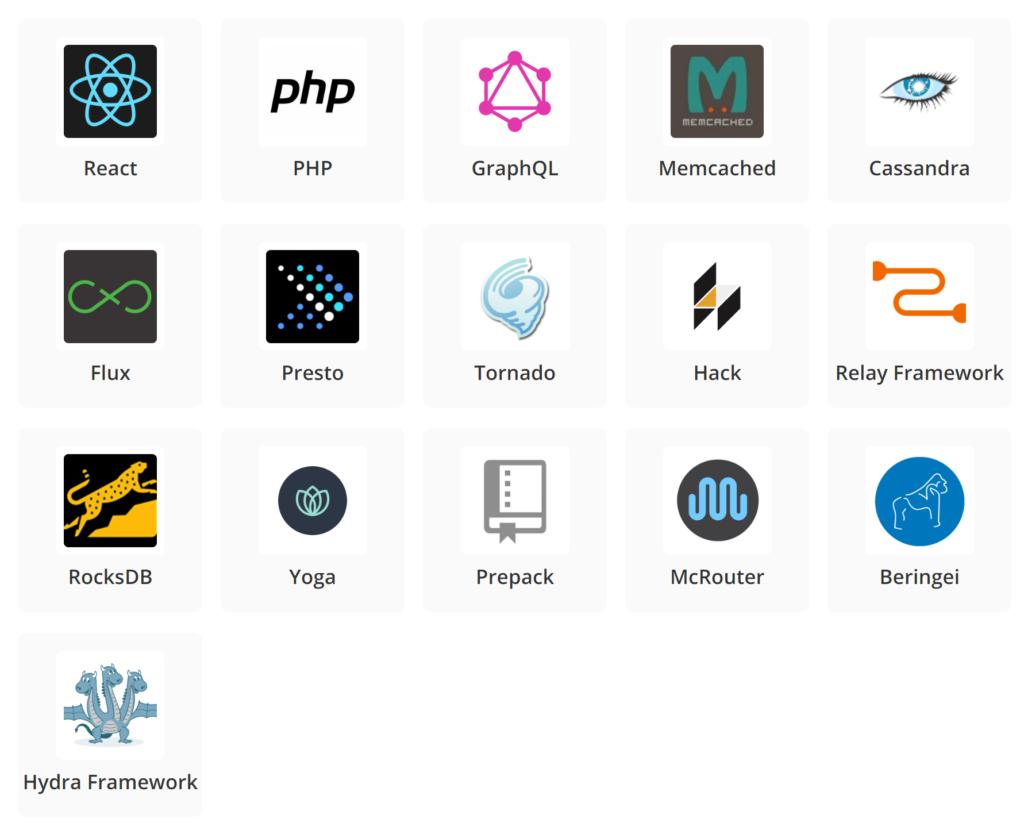
Pinterest.com – a social bookmarking site. Full stack here.
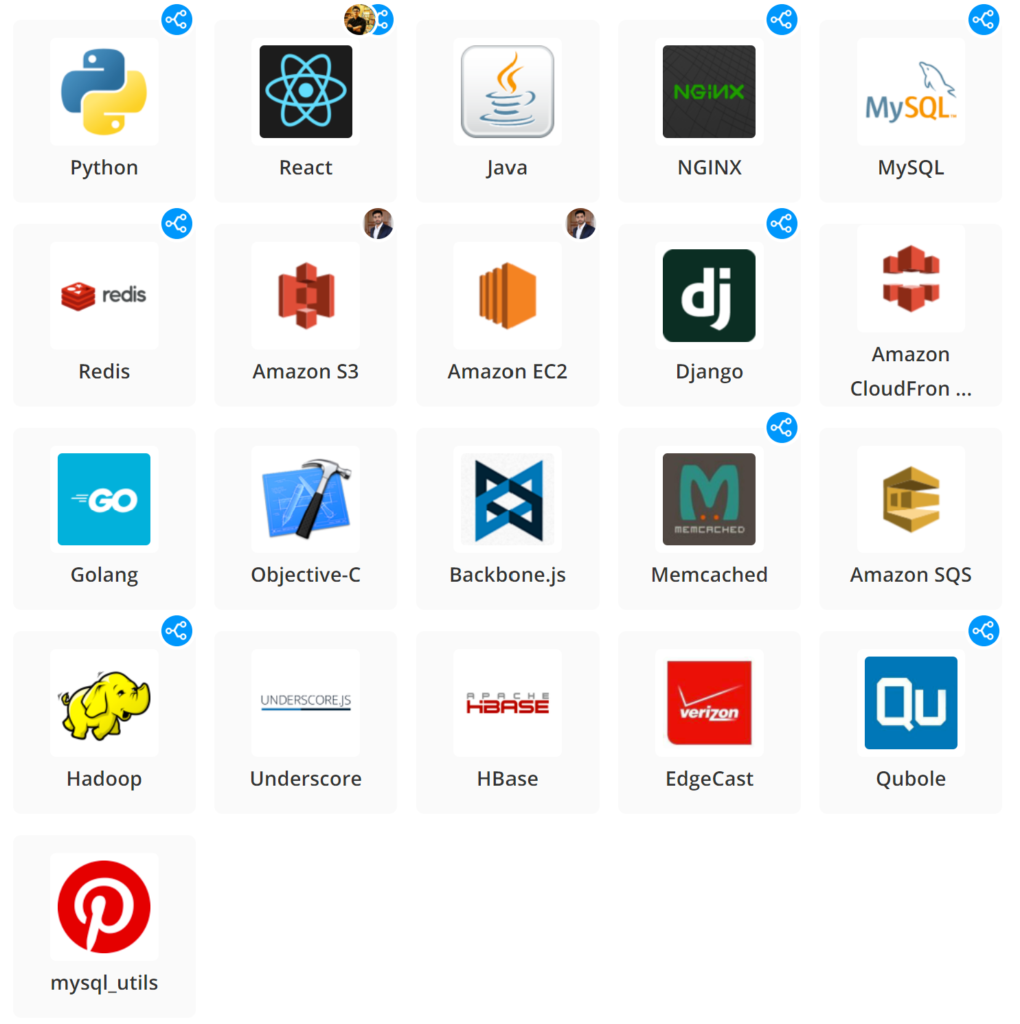
LinkedIn.com – a worldwide professional networking and career development platform. Full stack here.
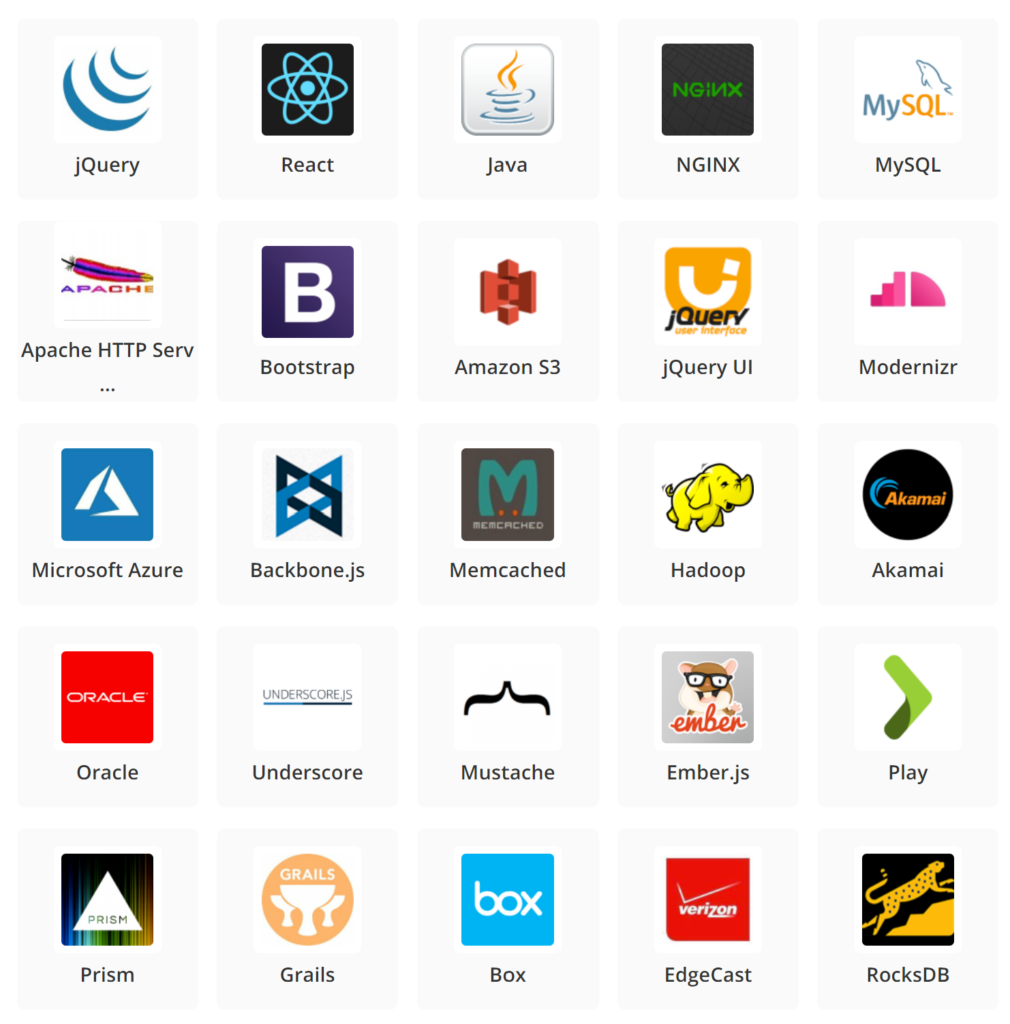
Groupon.com – a worldwide e-commerce marketplace. Full stack here.
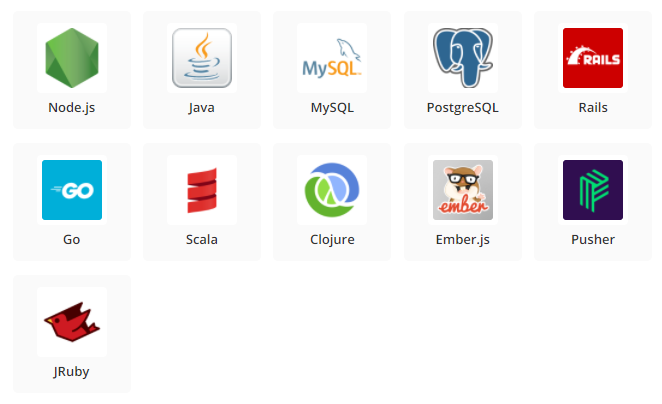
Zalando.com – a global e-commerce store. Full stack here.
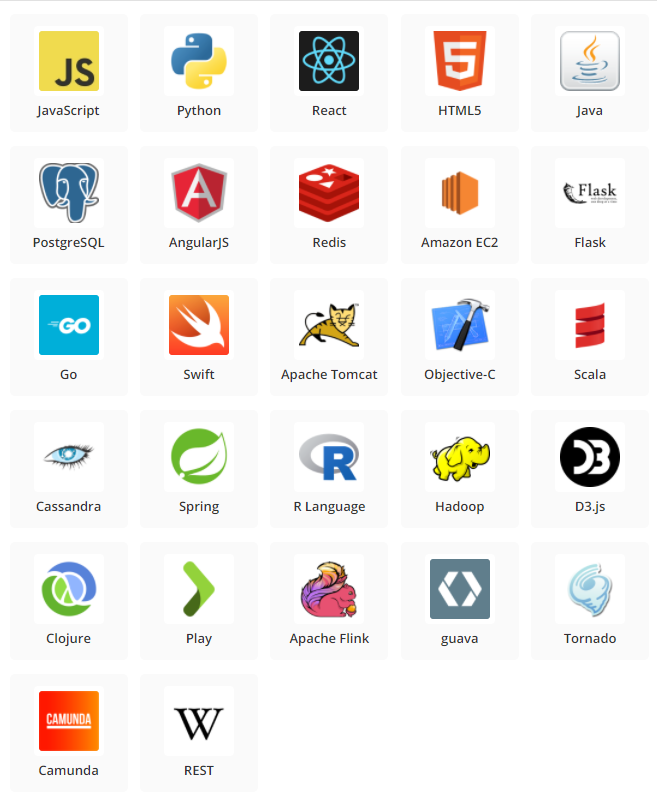
Ask.fm – a global social networking site. Full stack here.
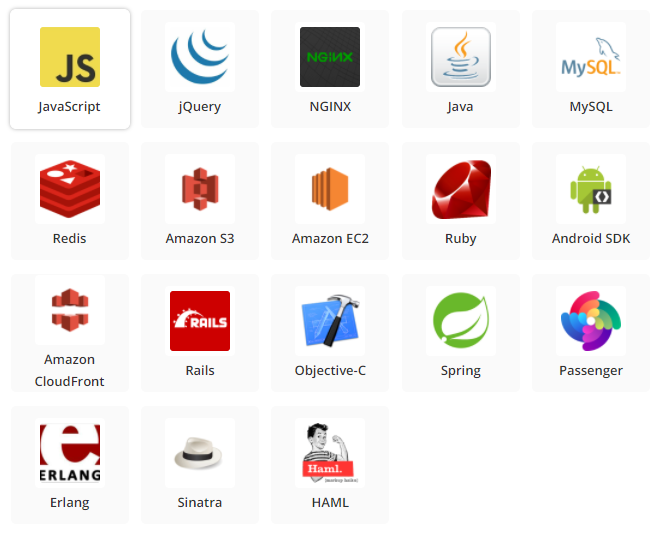
HubSpot.com – a comprehensive platform for marketing, customer service, sales, with a CRM software. Full stack here.
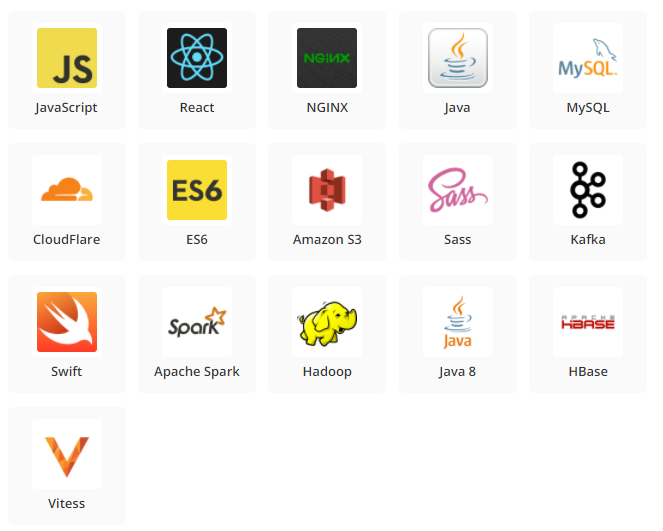
eBay.com – a multinational e-commerce store. Full stack here.
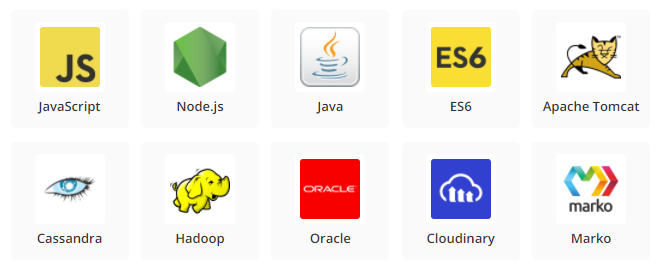
Lyft.com – a transportation network website. Full stack here.
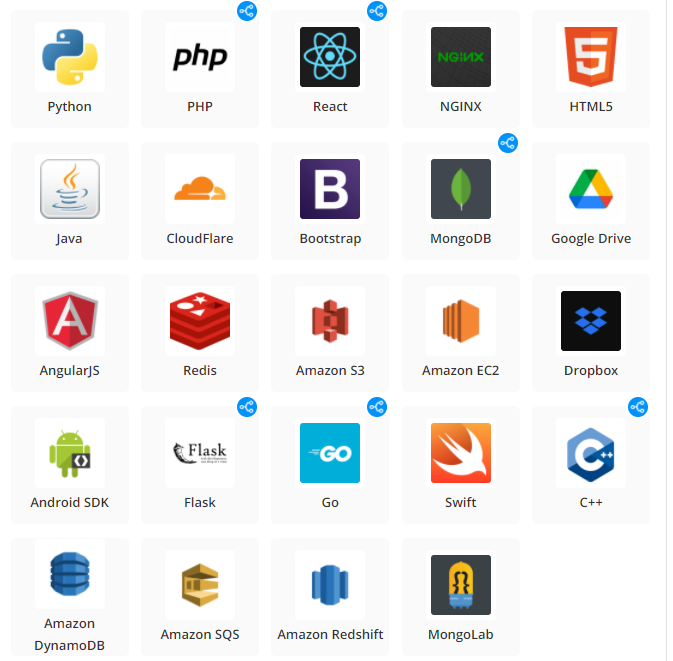
500px.com – a platform for a photography community. Full stack here.
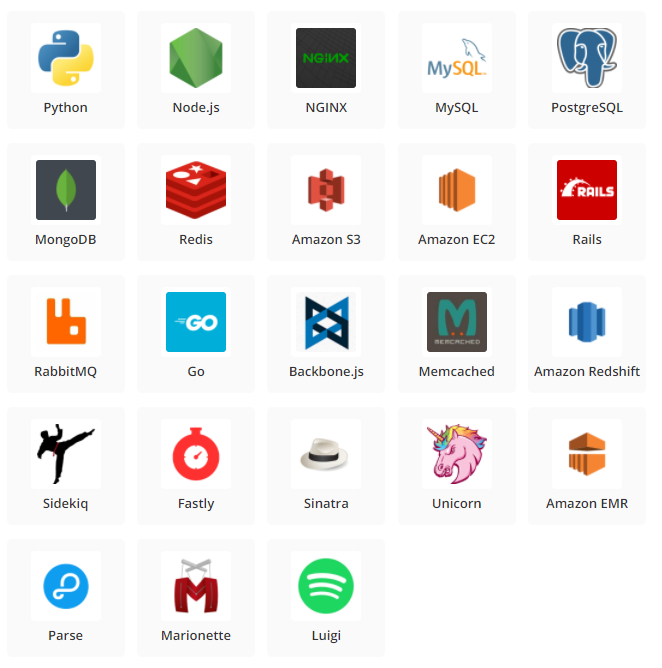
The New York Times – an American daily newspaper. Full stack here.
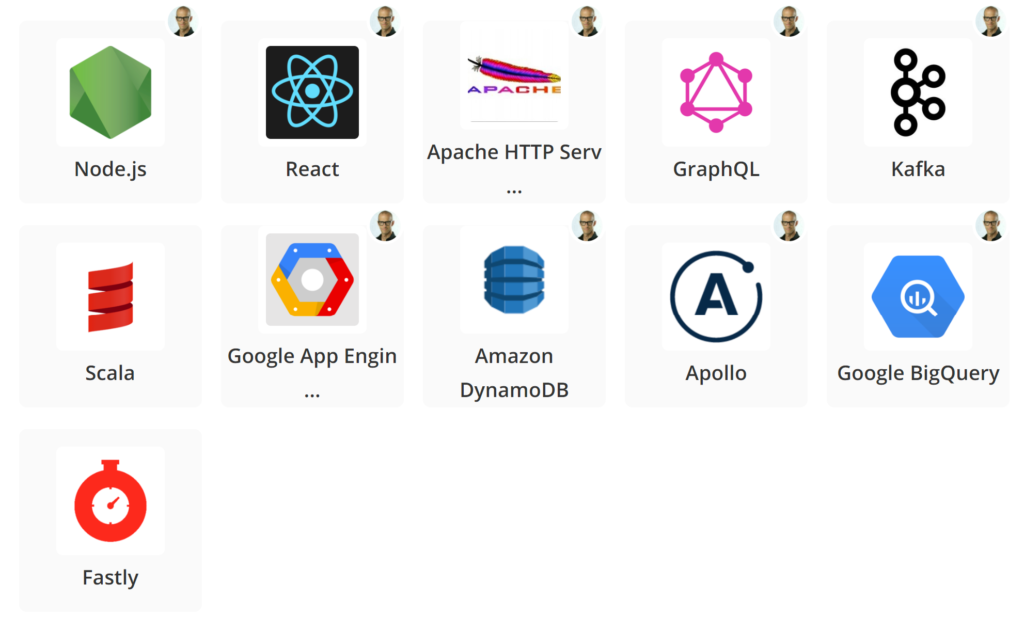
A Tech Stack Should Work for Your Success
As I’ve already pointed out, choosing a technology stack is only one aspect of developing a Web application.
The other part is a team of experienced Web developers who will know how to squeeze out the best of each component within the tech stack and use the combination of those components to build a highly performant and available Web app with impeccable UX and usability that complements the setup.
Even with a great toolset, inexperienced developers won’t squeeze out the full potential hidden within each tool. However, in the hands of skilled devs with a flair for building inspiring Web apps, a tested and proven technology stack is key to the successful development of Web applications.
If you have plan for any cross platform web application development, please don’t hesitate to contact us for more support at
- Message us
- Phone: +84 888 780 670
- Email: [email protected]
- Visit our website!
